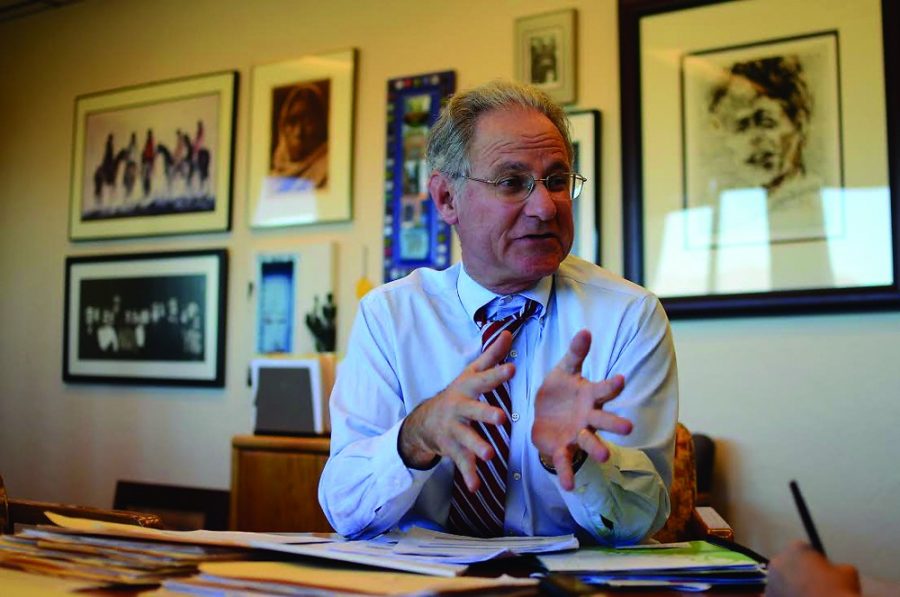Although UA students are just getting into the swing of things, Tucson Mayor Jonathan Rothschild has been busy after unveiling his two-year plan for the city last month. Rothschild sat down with the Daily Wildcat to chat about the streetcar, UA and city collaboration and his advice to college students.
DW: Talk to me about cooperations and collaborations between the UA and the city.
Rothschild: When you’re the mayor, you have to first start by looking at what your assets and strengths are. And in our community, the University of Arizona is probably our principal strength. … It’s really how we attract people to this community.
Since my first day in office, I’ve tried to work closely with the university president. We work on any number of projects together. There’s Tech Launch Arizona and the city is an investor in it and is working closely with the university to try to draw the intellectual property out of the university and into local businesses. The streetcar is another area where we’re working closely together. The economic success of the streetcar is going to depend on how many university students choose to use that as a principal mode of transportation.
Speaking of the streetcar, how do you feel it’s going to specifically affect the UA?
If I was the president of the university, I would consider it one of my principal assets. When you’re looking at colleges and schools and someone were to say to me, “Your child can live on this streetcar line and basically have access to everything they need for four years,” as a parent, I would say, “That’s a school I want my kid to be at.”
It’s a huge asset in connecting the university to downtown, and we want to work closely with the university on that. I know that President [Ann Weaver] Hart would like to bring other assets downtown.
Have you seen improvements in neighborhood and student relations?
One of the issues for the community and university relations is the fact that the university does intend to grow its population over the next 10 years. The university is surrounded by these historic neighborhoods, and so when there wasn’t a place for students and they wanted to be close to the university, up came mini-dorms. It was controversial, but the building of the new university overlay district where we’re going to have four towers that will hold UA students has already taken the market out of the mini-dorms. We said, “Look, this is the solution to the mini-dorm problem. We can try and regulate mini-dorms out of existence, [but] the fact of the matter is those kids are going to be in your neighborhood having parties on Saturday night.”
With students graduating from the UA and leaving Tucson, how do you make the city more attractive to graduates?
I think that if you ask most people graduating from the UA, a lot of them would say, “I’d love to stay in Tucson, but Mom and Dad say I need to get a job.” We need to work to get good jobs here. I think the UA feels the same way and that’s why working with Tech Launch is so important. It’s not easy, because you’ve got to create synergies, but the university can help drive that.
I don’t think Tucson is ever going to have trouble attracting retirees because of the weather. But to have a vibrant city of community, you need younger people who are working, raising families, putting stakes down in the community. It makes for a stronger community.
Could you talk to me about the economic synergy between Tucson and the UA?
The UA is a huge economic driver for our community. There are 100,000 people who work and/or live within half a mile of the streetcar line. A big part of that is the University of Arizona. If you were to take the UA out of our community, we would have a huge hole in our community. When we have fights at the state Legislature about bringing money to the university, those fights are about quality education and about the economic health of our community.
What advice would you give to college students?
It’s a pretty unique experience, between the ages of 18 and 21, and you don’t have to rush it. It’s the one time in life where you really get four years just to learn, just to read and have life experience. Those are four pretty valuable years, so take advantage of them. Take your studies seriously, because that’s an opportunity you’re not going to get again, and explore different things. Really find out what it is you want to do and what you have a passion for because, in the long run, if you want to have a happy life, you want to be engaged in something you love doing.









